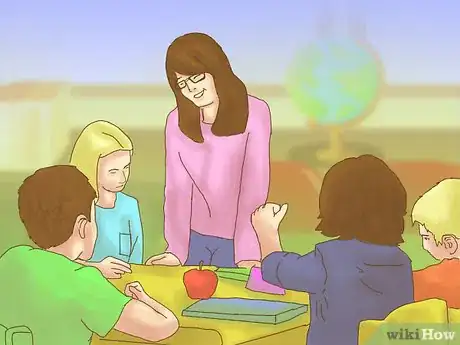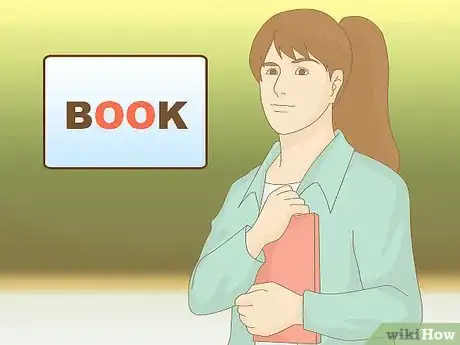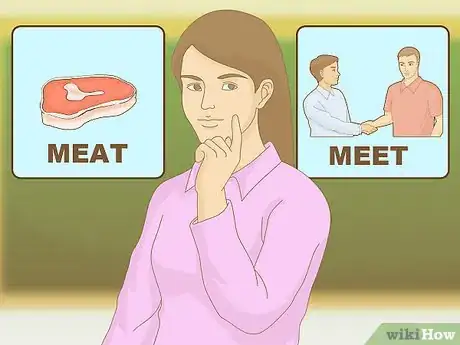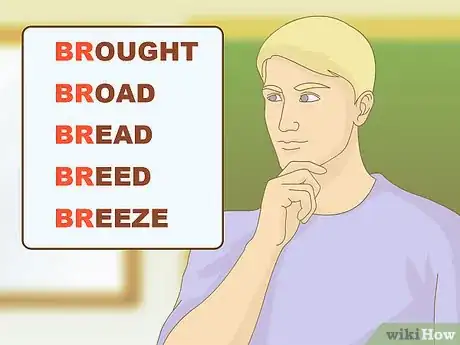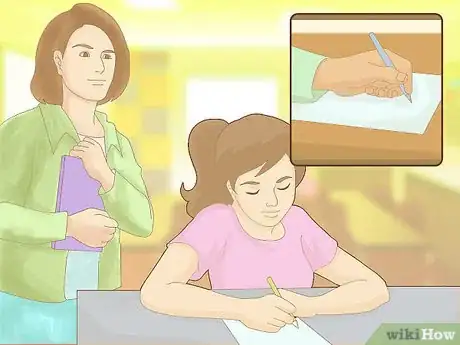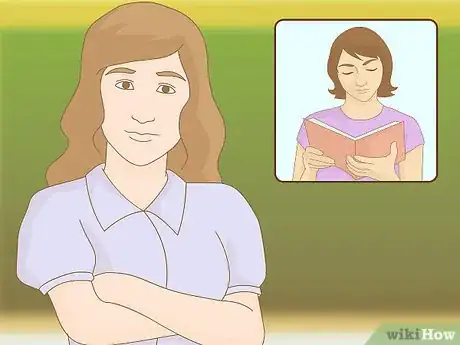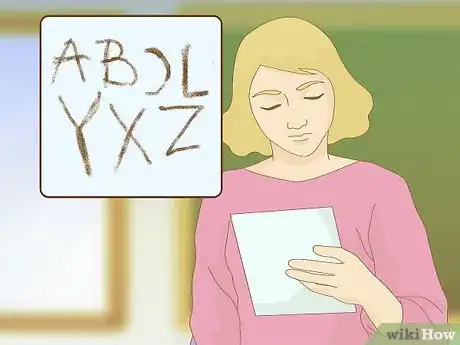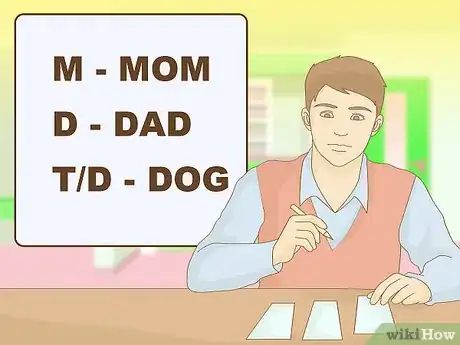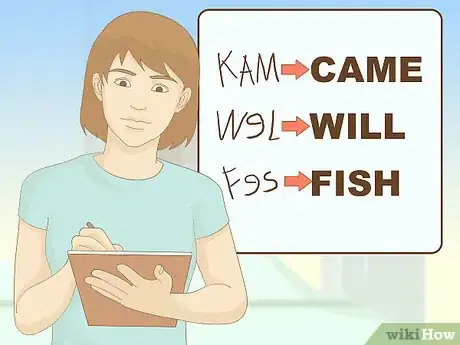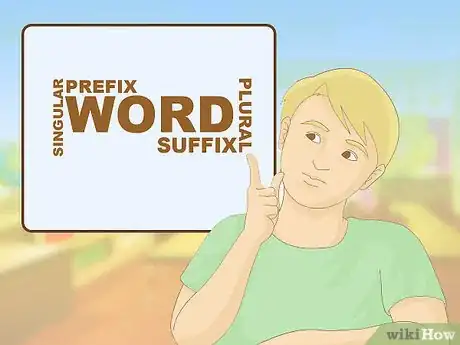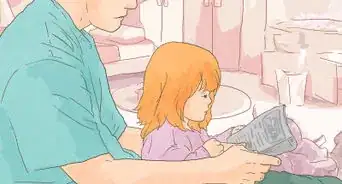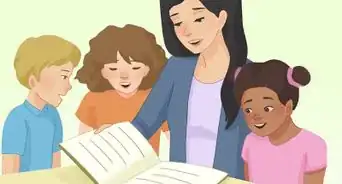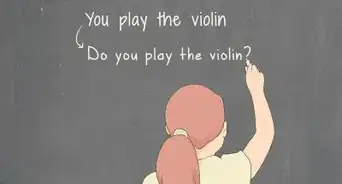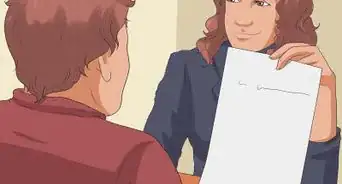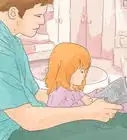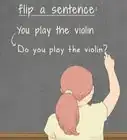This article was co-authored by Sylvia Rath. Sylvia Rath is a Parenting Specialist and the Director of Little Village Nursery School in Los Angeles, California. With over 30 years of experience, Sylvia guides parents through the preschool years and beyond by teaching respectful communication and positive discipline methods. Sylvia holds a BA in Psychology and Early Child Development from Antioch University. Before working at Little Village Nursery School, she taught preschool for eight years.
This article has been viewed 55,273 times.
Helping a first grader learn to spell can be both challenging and rewarding. Whether you're a teacher, a parent, a grandparent or a volunteer, there are ways to help a child with spelling words. The best strategies to encourage a young speller are based in knowing more about a child's spelling ability, and the early stages of writing.
Steps
Teaching Spelling Strategies
-
1Assess students' spelling knowledge. The best teaching practice starts with learning what the student already knows. Take a moment to check the students' knowledge of spelling by asking them to spell a list of common first grade words. Assessment allows you to start teaching at the area of your students' competence.[1]
- Words found at the first grade level are short, 1-4 letters long. They are 1 syllable words. Examples of first grade words are: a, to, at, boy, bad, dip, cat, nest, sand, play.[2]
- Assessment continues by analyzing students' independent writing. Provide opportunities for your students to write, whether in art projects or academic activities.
- Continue assessing throughout the school year. Ongoing assessment is vital for effective teaching practice.
-
2Teach in small groups. Most teachers are aware of the disparity between their students' abilities and know that small group instruction is preferred when possible. In helping first graders with spelling, it's essential to teach in small groups. Group assignments should be based on what you've discovered through your spelling assessments, so that students of similar spelling abilities can be taught at the same time.[3]
- Be aware that some students' reading and their spelling abilities may be quite different. Don't base spelling assessments on students' ability to read.
- Have other students engage in word-related activities at their seats, or participate in literacy activities in the classroom's centers, will help you manage the other students while working with small groups.
- Having an assistant or a classroom volunteer can be helpful to managing the small groups of students.
Advertisement -
3Prioritize spelling instruction. You'll need to find the time to assess and teach spelling to your first graders. This can be difficult to manage, because it requires individualization to the child's learning ability. Plan ahead to include spelling instruction every day, multiple times per day.[4]
- Consider creating inclusion of spelling words in different areas of study.
- Invest a little time every day in independent word work and individual or small group instruction.
-
4Teach word knowledge, not just spelling. Teaching sight words, words that the student is likely to encounter often, helps the first grader with spelling. Post familiar words around the classroom. Teach students to consider why the word is spelled as it is. Teach the rules behind the spelling.[5]
- For example, teach the reason for the silent e, and how it affects the sound of the word. Adding an e to a simple 3-letter word usually makes the vowel long, rather than short.
- Teach sight words that don't usually fit the standard first-grade curriculum, if you find the students' using these words frequently. Post these words around your classroom, and refer to them when they naturally arise in other teaching. These sight words might include: because, are, again, said, friend, were.
-
5Demonstrate usefulness of spelling. Students will be more motivated to learn to spell if they understand its importance. A first-grader must be taught the connection between reading words and proper spelling. By teaching students to recognize the power spelling has over understanding, you'll help them transfer their spelling knowledge into other activities of their life.[6]
- Group activities can have multiple fill-in-the-blank opportunities. Mad Libs is a great activity for teaching spelling.
- Teacher scaffolding can help support beginning learners. Reminding the student what she already knows, strategies she might try to complete a spelling word, and providing hints and encouragement all support a first grader with spelling.
-
6Integrate strategies for independent spelling. When you're helping your first graders, say each word you want them to spell slowly. Teach your first graders to listen for the sounds they hear (initial sound, middle sound, final sound). Help them identify any part they might know, e.g., br in brought.[7]
- Encourage students to notice how words come together to make a larger word. For example, putting fun and silly together to make funny. Students might enjoy clapping the syllables, then writing letters for each syllable.
- Help the students identify different spellings of rhyming words, such as space and place, or here and there.
- Students need lots of opportunities to try the correct spelling to see if it looks right. Provide resources around the classroom - dictionaries, calendars, charts, word walls, etc.
-
7Encourage all writing, regardless of spelling. Writing and spelling are two different academic areas. Having students write, without worrying about their spelling, will help them become more confident writers and spellers.[8]
- Provide opportunities for students to write about things that are important to them: football games, video games, school outings, or pets are popular topics.
- These learning opportunities are found throughout the students' day. Make games out of writing about new topics.
-
8Expose students to written words. The more a child is exposed to written words, the more likely he is to internalize the spelling of the word. If you're working on particular spelling words, point them out in books, magazines and online. Highlight with a marker to emphasize that the word he's learning is also found in the "real world" if possible.[9]
- Some students might learn well auditorily but others might need to see you spell out a word before they can copy it. Try both strategies and see what works.[10]
- Students may enjoy "proofreading" for spelling mistakes.
- First graders may appreciate reading the same stories over and over again. If this is the case, take advantage of this repetition to highlight different words found within the same story.
Recognizing the Early Stages of Writing
-
1Know the signs of the pre-communicative writing stage. A first grade child may be still at the pre-communicative stage of writing, which means that he only has a rough idea of the alphabet. Your first grader may recognize different letters of the alphabet, but be unaware of words as a visual construct. Spaces between words may not be noticed.[11]
- For children in this stage, continue to teach alphabet shapes and expose the child to written words through reading aloud with him.
- Don't criticize a child's writing at this early stage. All children develop at different speeds.[12]
-
2Learn about the semiphonetic stage of writing. By first grade, some children will be at the semiphonetic stage of reading. A this stage, the child is making a connection between the sound of the word and the sound of a letter or two within the word. He may dramatically abbreviate the word, such as using T or D for dog.[13]
- The word that the child may attempt to spell first may be his name, or the M for Mom or D for Dad.
- Children's ability to segment, or separate, the distinct sounds of a word may be still emerging.
- Encourage a child to write often, no matter how difficult the word may be to read. Don't worry about spelling at this stage, but provide help if the child is open.
-
3Know about the phonetic spelling stage. This is a common stage for first graders, a stage of spelling that assumes basic knowledge of the alphabet and understand that words and sounds are connected. A speller at this stage may use "invented" spelling patterns based on the sound of the word.Children at this level will be more interested in learning correct spelling. Provide models of correctly spelled words, and start to encourage them to think about how to spell words for themselves. This is a wonderful stage to start to help a child with spelling.[14]
- Read aloud rhyming books, poems, and songs.[15]
- Examples of invented spellings might be kam for came, wel for will, fes for fish, etc.
- Another thing you might notice is that the child starts to recognize beginning patterns in words, noticing rhymes and similar sounds.
-
4Learn more about the transitional spelling stage. A few first graders might already be at the transitional stage of spelling. At this stage, the student will have emerging reading skills and recognize many words. They begin to understand that sounds are represented by letter combinations, and that words can be made plural or altered in other ways by suffixes and prefixes.[16]
- Being patient with mistakes at this stage is essential. The words might actually be more difficult to understand than with a phonetic speller, but the child's spelling mistakes are based in an inadequate understanding of spelling patterns. Continue to teach the patterns that make for good spelling.
- Teach the child how to laugh at spelling inconsistencies as are so often found in the English language. Reminders of appropriate spelling can also be taught at this stage, such as "I before E, except after C, unless it's an A as in neighbor or weigh."
References
- ↑ http://www.readingrockets.org/article/word-study-instruction-k-2-classroom
- ↑ http://www.spelling-words-well.com/1st-grade-spelling-word-list.html
- ↑ http://www.readingrockets.org/article/word-study-instruction-k-2-classroom
- ↑ http://www.readingrockets.org/article/word-study-instruction-k-2-classroom
- ↑ http://www.readingrockets.org/article/word-study-instruction-k-2-classroom
- ↑ http://www.readingrockets.org/article/word-study-instruction-k-2-classroom
- ↑ http://www.readingrockets.org/article/word-study-instruction-k-2-classroom
- ↑ https://www.heinemann.com/shared/onlineresources/08894/08894f4.html
- ↑ https://www.heinemann.com/shared/onlineresources/08894/08894f4.html
- ↑ Sylvia Rath. Parenting Specialist. Expert Interview. 18 May 2021.
- ↑ http://www.scholastic.com/teachers/article/how-children-learn-spell
- ↑ Sylvia Rath. Parenting Specialist. Expert Interview. 18 May 2021.
- ↑ http://www.scholastic.com/teachers/article/how-children-learn-spell
- ↑ http://www.scholastic.com/teachers/article/how-children-learn-spell
- ↑ Sylvia Rath. Parenting Specialist. Expert Interview. 18 May 2021.
- ↑ http://www.scholastic.com/teachers/article/how-children-learn-spell

